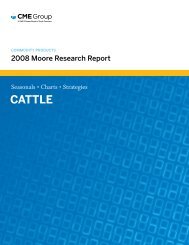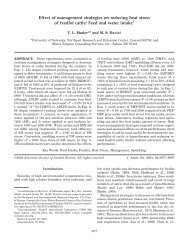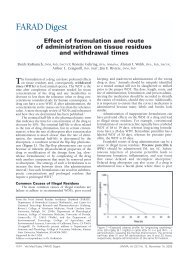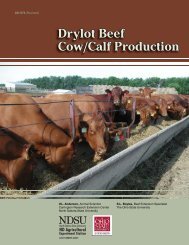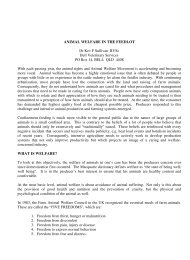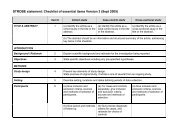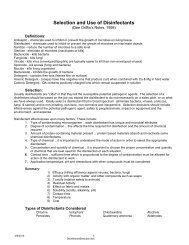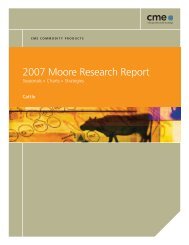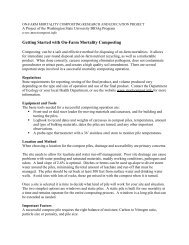Field Necropsy of Cattle and Diagnostic Sample Submission - gpvec
Field Necropsy of Cattle and Diagnostic Sample Submission - gpvec
Field Necropsy of Cattle and Diagnostic Sample Submission - gpvec
Create successful ePaper yourself
Turn your PDF publications into a flip-book with our unique Google optimized e-Paper software.
394<br />
Griffin<br />
<strong>and</strong> saves the cutting edge <strong>of</strong> the knife. Use a ceramic rod to repeatedly touch up the<br />
cutting edge during the necropsy.<br />
FIELD NECROPSY PROCEDURE WITH MINIMAL LOOSE PARTS<br />
Important Note<br />
Animals that will be rendered must not contain chemical residues that could be harmful<br />
to other animals that would consume rendered products. 1<br />
Start with the Ruminant on its Left Side<br />
Think about what is observed. Collect histopathologic <strong>and</strong> culture specimens while<br />
working. Histopathologic specimens should not be thicker than 5 to 7 mm. Try to<br />
connect observations into a unifying diagnosis or production management<br />
observation.<br />
The procedure outlined is designed to make it easier for animals to be picked up by<br />
rendering trucks <strong>and</strong> to minimize hide damage, thereby improving the hide value to<br />
renderers. Detaching any organs that are not required for examination is not being<br />
considerate <strong>of</strong> the people working for the rendering company <strong>and</strong> is more likely to<br />
create a mess at the farm, ranch, or feedlot on which the necropsy examination is<br />
being performed.<br />
Review Anatomy <strong>and</strong> Gross Pathology<br />
Knowledge <strong>of</strong> the structure <strong>and</strong> function <strong>of</strong> the organ tissues being examined can be<br />
key to linking observations to a meaningful diagnosis. 2,3 Be slow to jump to diagnostic<br />
conclusion based on the first observations. The “lift a leg <strong>and</strong> look” or “peek-a-boo”<br />
necropsies generally leave important production management observation undiscovered<br />
<strong>and</strong> minimize the value <strong>of</strong> the observations that could have contributed to better<br />
animal care <strong>and</strong> management.<br />
Accessing the Brain<br />
It is important to check with the rendering company serving the animal facility about the<br />
acceptability <strong>of</strong> examining the brain, because some companies will not pick up carcasses<br />
that have had the cranium opened. Also remember that rabies should be on the differential<br />
list for all central nervous system cases, so take all appropriate precautions.<br />
Fig. 4 demonstrates the appropriate lines for removal <strong>of</strong> the calvaria. The cut needs<br />
to be approximately as deep as the distance from the front <strong>of</strong> the skull to the lateral<br />
Fig. 4. The steps for opening the skull with an axe to expose the brain. (A) Cut across the<br />
face just dorsal to the lateral canthus then cut from the lateral canthus dorsal in front <strong>of</strong><br />
the ear over to the poll, across the poll to the level <strong>of</strong> the opposite ear. (B) Using the blunt<br />
side <strong>of</strong> the single-bit axe, strike the edge <strong>of</strong> the cut bone between the lateral canthus <strong>and</strong><br />
the ear at a 45 angle. (C) This will break the skull away from the brain.




